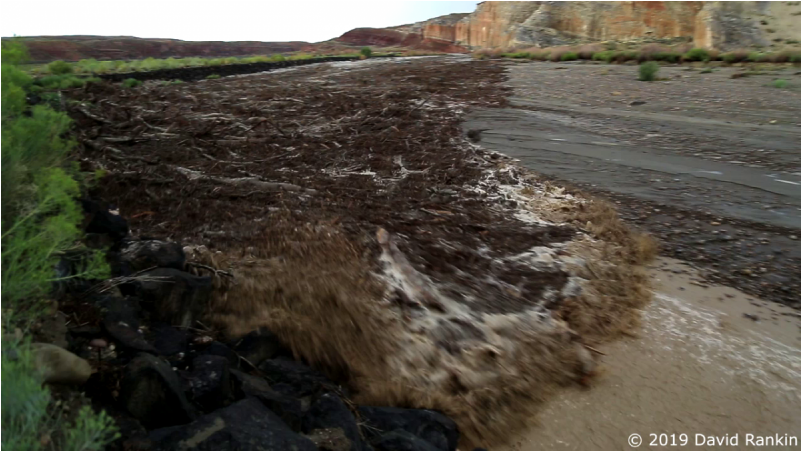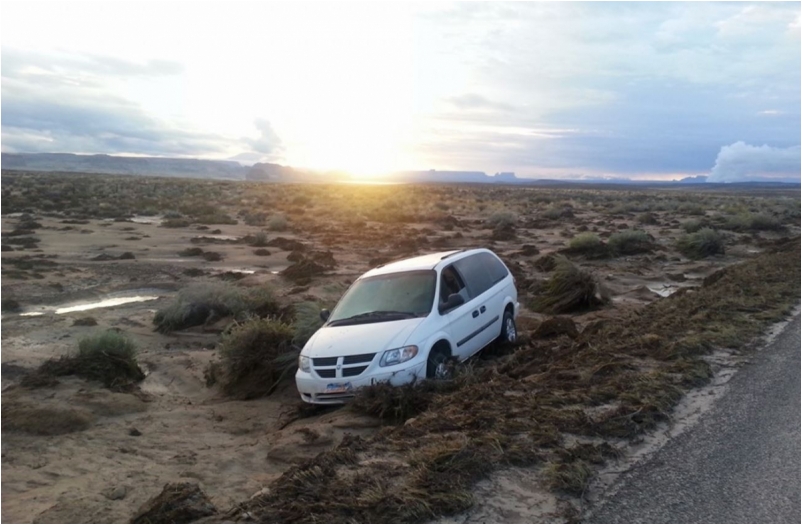"There Are Two Easy Ways to Die in the Desert: Thirst and Drowning" - Craig Childs
I've been predicting and chasing flash floods for over 15 years in southern Utah. I've posted a lot of content to YouTube. There are some good questions brought up often and I don't have time to answer every one so here is a little FAQ based on the most common questions. Enjoy.

FAQ:
1. Where do all of the trees / debris come from?
A lot of people are surprised to see so much wood / debris in these floods. This debris travels long distances from where the floods are being generated. For instance, If I film a debris packed flood in the Paria River in southern UT, that flood may have been generated more than 8 hours before and 40+ miles away. The highest elevations of the Paria catchment are a few thousand feet above where I am filming and there are pine forests.
2. Where does it all go?
All of the flash floods I film are on the Colorado Plateau, so they eventually drain into the Colorado River.
3. Is that dangerous?
Yes. I grew up around here so I have a very good understanding of the way flash floods behave and the topography of the landscape. All of my filming locations are carefully evaluated before I go in to film a flood. Flood size is very hard to predict so before getting close I gauge how large the flood is from a safe location first. The most dangerous place to be during the southwest monsoon season is in a slot canyon. The areas I chase are very wide stream beds where every inch the flood comes up requires an exponentially greater volume of water to fill. This also makes it easier to escape. Statistically, most flash flood deaths occur in vehicles when people are trying to cross flooded roadways.
4. Why don't you use a drone?
I do. A lot of my popular videos were filmed well before consumer drones were affordable. Look at my recent videos and you'll see drone footage.
5. How long do they last?
This is fully dependent on how long the rain event that created the flood lasted. 9 of 10 times these are rather quick thunderstorms that burst up, dump a few inches of rain, then leave. The floods typically peak right after the front wall comes through and start dropping back down within the hour. This is also why it is not a smart idea to panic if you get on the wrong side of the flood. They are typically back to a trickle within 6 hours. Just wait it out then cross.

Some Safety Tips:
Here are some safety tips if you want to avoid dying in a flash flood.
Flash flood can occur at any time of year, day or night. They are most common during the monsoon season.
1. Most people visit this area during the monsoon season. This is unavoidable, so there is a chance you will be surprised by a flash flood. Most of the time this happens to people that are trying to get into the back country in rental cars and they come upon a flooded roadway. Don't cross it. Just wait it out. I don't care if you have a flight, or a hotel, or a different hiking reservation, it is idiotic and you are likely to die. These floods come and go quickly. If you put your life on hold for a few hours it will subside and you will be on your way again. It's also a good idea to pay close attention at night when driving in heavy rain. You can have a false sense of security when you are on a major highway. A large flash flood doesn't care what road you are on. I have seen floods fill 14 x 14 foot culverts under the highway and toss car size boulders onto the highway in the process. If you get in this situation, find high ground and wait the storm out then proceed with caution.
2. A lot of people come here for the slot canyons. If you decide to explore slot canyons during the monsoon season, check the forecast. Do some research first and determine where the catchment / headwaters for that slot canyon are. Often there will be no chance of rain at the slot canyon itself, but there will be a chance in the higher elevations that drain down into the slot canyon. Check the forecast for all of these locations. If there is a chance of rain the day of your hike, don't go. That is the safest bet. I also realize that people will ignore this advice. If you decide to gamble with your life and go into a slot canyon when there is a chance of thunderstorms that day, do it early. Most of the monsoon storms form after the daytime heating has destabilized the atmosphere and fired the storms off. This process is usually fully underway by 11am. Be out of the canyons before this happens. In most cases this will be the safest bet, but there are exceptions to this rule. The monsoon can be mixed with other weather patterns that disturb the atmosphere earlier than 11am and you can still die in a flood any time of day or night.
3. Never camp in a stream bed. This is going to be a convenient place to setup camp because there is no vegetation. There is a chance you'll wake up in the middle of the night to a 5 foot wall of trees overtaking your tent.
4. A vehicle is very buoyant. You are driving a boat with wheels and it wont take much water to float that boat away. Never cross a flooded roadway. I don't care if you are in a tank, a sedan, or on foot. The water may not look deep but the road may have been fully washed away. This is still how most people die in flash floods. Wait a few hours or find another way to get to your destination. Resist the temptation to drive into the water and you will not die. Pretty simple.
5. It is always a good idea to carry a PLB with you, especially if you are going far off the beaten path.
Cheers
David Rankin
